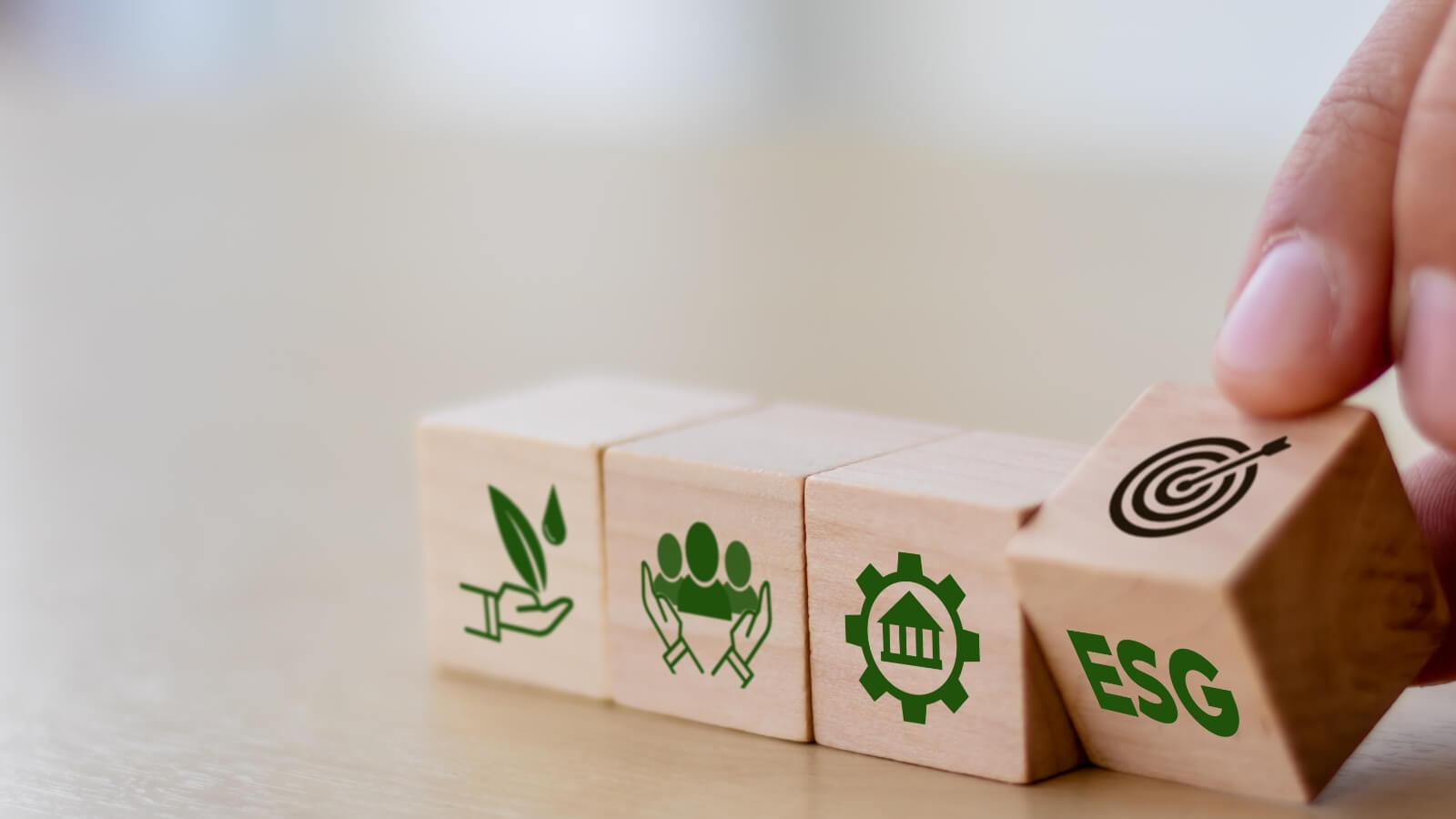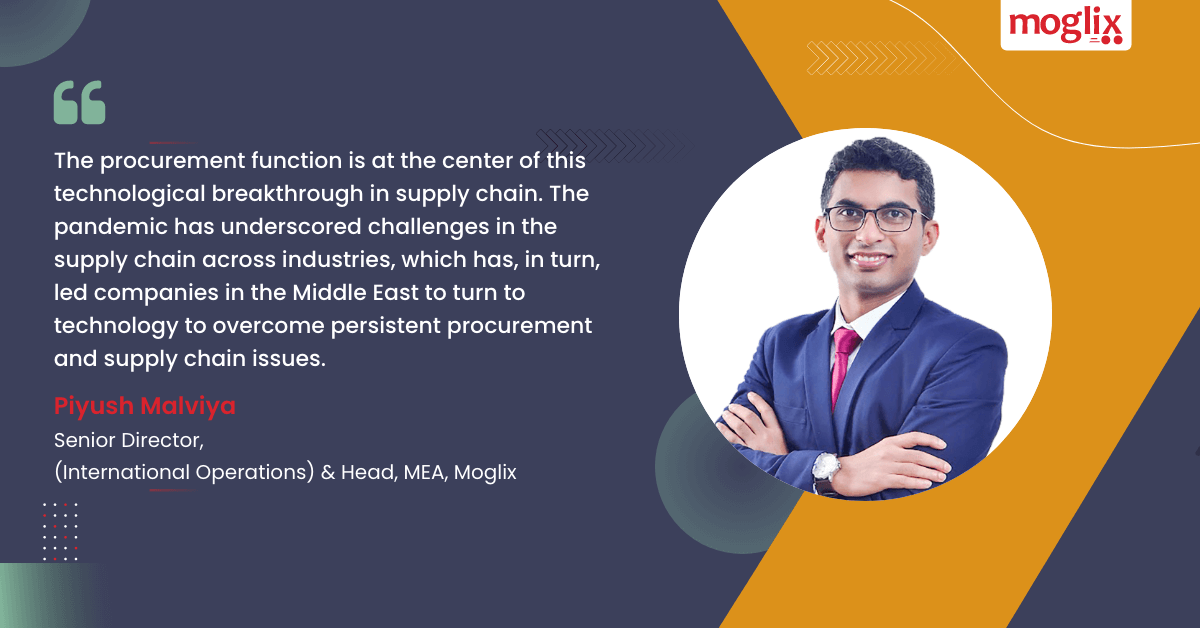Building Strong Supplier Relationships in UAE for Business Growth

Building Strong Supplier Relationships in UAE for Business Growth
Supplier relationship management is an integral part of every supply chain, no matter what part of the world your business is in. For companies in the UAE, supplier relationship best practices may be particularly crucial since the region is among the top importers in the world. Moreover, reductions in global trade barriers have made it possible for companies in the middle-east to source materials, goods and services from various top exporters in the world, like China, India, the USA and Japan.
If your business is established in the UAE, strong relationships with vendors across borders can help you scale up quickly. Supplier relationships in the UAE also impact the procurement supply chain in many ways, as outlined below.
Vendor relations in the procurement supply chain
Here are the key benefits of vendor relationship best practices for your supply chain over the long term.
- It encourages supplier-led innovation
- It results in cost savings by eliminating the need to set up new contracts
- It helps form partnerships with suppliers whose goals align with yours
- It strengthens your supply chain and reduces fragmentation of the product procurement
- It improves operational efficiency by eliminating shortages and maverick purchases
Five tips for building and maintaining strong supplier relations in the modern world
Building good relations with your suppliers is tough, and maintaining them can be tougher still. Nevertheless, here are some industry best practices you can adopt to boost your supplier relationship management.
- Keep the lines of communication open
- Understand what your suppliers offer
- Choose vendors whose offerings align with your needs
- Draw out detailed and precise contracts to eliminate ambiguity in your dealings
- Uphold your end of the contract and pay your dues on time
Digitization: The need of the hour to tackle challenges in supplier relationships today
Supplier relationship management can be fraught with issues like a weak SRM strategy, failure to align supplier-client priorities, poor communication between the parties involved and even trouble enforcing the contracts involved.
Digitization and e-procurement can be revolutionary game-changers here. With digital transformation elevating your SRM practices, you can screen suppliers more effectively and partner with the right vendors. It also facilitates better communication with your vendors and leaves little room for ambiguity in contract management.
Build and maintain supplier relationship with experts
Managing supplier relationships in the UAE is a continuous process that needs to be updated periodically to keep pace with industry best practices. An expert procurement and supply chain partner like Moglix can help you navigate this evolving requirement, leaving you free to focus on your core business. Know How
How will blockchain revolutionize procurement supply chain?

How will blockchain revolutionize procurement supply chain?
Even as the world moves towards a more efficient future, blockchain is slowly but surely transforming B2B transactions on a global scale today. In fact, the total number of B2B cross-border blockchain transactions is projected to surpass 1.7 billion by 2025. The UAE, in particular, is a region of interest because it is quickly emerging as one of the most preferred markets for blockchain startups and businesses.
In a world where blockchain is gaining increasing prominence by the day, businesses need to be equipped to tap into this technology optimally. And where better to begin than the fundamentals?
Beginning at the basics: What is blockchain?
The word ‘blockchain’ is everywhere now, but businesses need to understand what it is all about to truly make the most of this new technology. Simply put, a blockchain is a decentralized and immutable digital ledger. Blockchain technology uses this concept to facilitate transparent yet secure data sharing across a network.
The role of blockchain technology in UAE’s vision for the future
In the journey to the future, the United Arab Emirates has always been one step ahead. So, when blockchain emerged as a potential contender for technologies that could shape the world in the coming years, the UAE embraced it and how! The launch of the Emirates Blockchain Strategy 2021 and the Dubai Blockchain Strategy are some of the most relevant examples in this regard.
Further, the Dubai Future Foundation also established the Global Blockchain Council to explore the possible applications of this futuristic technology. Amid this dedicated focus on blockchain in the UAE, businesses in the region must understand how technology can revolutionize the procurement supply chain.
Three ways in which blockchain can revolutionize the procurement supply chain
Here is how blockchain technology can add value to your procurement supply chain.
The creation of smart contracts
Blockchain can be pivotal to creating smart and tamper-proof vendor contracts. These contracts can support multi-party agreements and even be self-executed, so payments occur on time.
Enhanced supply chain transparency
Improved transparency and visibility across the supply chain make vendor management more efficient for your business. With blockchain, you get the benefit of audit trails, better traceability and verifiable supplier credentials across the procurement cycle.
Streamlined purchase management
Purchase management is a crucial part of the procurement supply chain. Blockchain technology can be a game-changer since it facilitates more efficient order approvals, quicker invoice processing, and a more streamlined procure-to-pay cycle.
The first step in the blockchain-led revolution
Digitalization is the first step that will make your business ready, for when you would need to take that leap into the future of procurement supply chain using blockchain technology. Moglix facilitates has been working with organisations digitally transforming their procurement supply chain. Contact us today to learn more about how your business can keep pace with the newest trend in the UAE’s B2B landscape.
3 reasons to perform procurement spend analytics

3 reasons to perform procurement spend analytics
What are you buying? Whom are you buying from?
How much have you spent on it, and how do the outlays compare to last year?
As an e-procurement professional today, these are only some of the many questions you will need the answers to. This is because monitoring and managing spend across the supply chain are integral to procurement leadership. And spend analytics can help you here.
What is spend analytics in procurement?
Spend analytics is gathering data related to an organization’s expenses, sorting, grouping and classifying that data, and then analyzing it to gather meaningful insights on where every penny goes. The end goal is to optimize costs and maximize profits.
3 key reasons you need procurement spend analytics
Spend analytics is pivotal in controlling and optimizing expenses in the procure-to-pay cycle. Here are 3 key reasons procurement leaders of today should prioritize this process.
1. Improved spend intelligence
With a robust spend analytics program, you get improved visibility of the costs incurred on procurement. Spending intelligence such as this can be crucial to reviving and optimizing your business supply chain. It also allows you to make more confident spending decisions because you are aware of how much your business is spending.
2. Easier identification of savings opportunities
E-procurement coupled with spend analytics also makes it possible for you to identify the areas that hold great potential for cost savings. By cost-cutting where you can and having a flexible procurement budget where needed, your business can benefit from incremental savings that stem from smart expense optimization.
3. Better supplier relationship management
Vendor management is pivotal to building profitable supplier relationships across the procurement cycle. And the information gathered from your data analytics processes can be invaluable in this regard. As a procurement professional today, you can use the insights gathered to partner with suppliers who meet specific criteria, promote supplier development, and build better relationships with your vendors.
Another challenge that procurement managers face is understanding KPIs they need to track to understand spends better. The key performance indicators (KPIs) to measure the effectiveness of your organization’s procurement spend analytics include:
● Cost savings
● Category-wise spending
● Supplier performance
● Vendor management
● Operational KPIs
Optimize your procurement with world-class spending analytics
Moglix offers intelligent spend benchmarking solutions that allow you to compare your procurement expenses with industry benchmarks and optimize your spending. Contact us today to know more about how our spend analytics solutions can help you on your path to absolute digital transformation.
Make the transition to sustainable procurement with this 5-step guide

Make the transition to sustainable procurement with this 5-step guide
With ESG business practices gaining prominence worldwide, sustainable procurement may be more relevant than ever for your business. In theory, sustainable procurement is simple enough; it involves integrating ESG factors into your organization’s supply chain and procurement process. When done right, sustainable procurement can improve your brand reputation, promote better supplier relationships and increase profitability.
Data from the World Economic Forum shows us that sustainable business projects may lead to cost savings of 9% to 16% and can increase revenue by up to 20%. Research by Hackett also reveals that around 92% of companies are already poised to have a sustainable procurement program by 2023.
Your business can also join this league by adopting an immediate and effective action plan to make procurement more sustainable as we journey into a new year.
A simple, 5-step plan to achieve sustainable procurement
Here is what your business can do to make the transition from conventional to sustainable procurement faster and more effective.
1. Identify the critical areas in your supply chain.
Whether you follow conventional sourcing practices or have partial e-procurement implemented in your business, the first step to sustainability involves identifying the areas that matter. For most organizations, the critical areas in the supply chain include sourcing, negotiations, contract management, vendor management and payment, thus completing the procure-to-pay cycle.
2. Evaluate and define sustainable criteria for your business procurement
Once you have identified the key areas in your procurement cycle, evaluate how sustainable (or unsustainable) they are. This will give you a clear idea of how far you have come and how much you need to go. You can then define the sustainable criteria you must meet in each critical area of your supply chain.
3. Perform supplier due diligence
Supplier due diligence may be just as crucial as supplier relationships in the journey to a more sustainable future. Before you sign a contract with a potential supply partner, evaluate their commitment to sustainability and assess if you have shared business values. In the long run, this will make vendor management much more accessible and help you progress more quickly on the path to sustainability.
4. Develop the roadmap for sustainable sourcing
The next step to sustainable procurement is developing a roadmap that makes your strategy for the future clearer and easier to implement. First, identify the critical business practices you want to focus on to future-proof your supply chain sustainably. Automation, paperless contract management, digital transformation and strict adherence to your organization’s ESG goals are essential pillars of your strategy.
5. Roll out your plan and review it periodically.
To complete the action plan towards a more sustainable procurement process, you need to roll out your developed strategy and monitor its implementation. For best results, it is advisable to review your plan periodically, identify weak areas, if any, and work on strengthening sustainable practices within your procurement department.
Want to accelerate the shift to e-procurement and sustainability?
Moglix can help you with this. Our end-to-end procurement solutions can overhaul your supply chain procurement strategies an help on your path of digital transformation, while keeping in mind your sustainability goals. Contact us today to learn more about how this works
Need for a holistic strategy to maximize ROI across the supply chain

Need for a holistic strategy to maximize ROI across the supply chain
The immediate purpose of supply chain lies in delivering a customer experience that satisfies expectations and fulfils contractual obligations between the supplier and the buyer, with an ultimate outlook of increasing market share while mitigating risk and reducing costs. This is a demand-driven business model; one that functions as a blueprint for creating an integrated supply chain system where customers’ demand and their satisfaction guides day-to-day decisions and longer-term market strategy.
To this effect, there are various key supply chain links that must be addressed as a part of a holistic strategy for meeting customer demand and optimising the processes of procurement, production, distribution, and inventory-keeping.
Maintaining Organizational Agility
Envisioning a sustainable supply chain management system must begin with an initial and pervasive attitude of being quick and efficient in responded to both expected and unexpected disruptions.
“Managing the key supply chain links is the core of adopting a customer-focused approach to business, ultimately leading to satisfying customer demands, and fulfilling contracts to the letter.”
adds Piyush
Silver bullet to mitigate Supply Chain Disruptions

Silver bullet to mitigate Supply Chain Disruptions
The manufacturing sector in the middle east, prior to the pandemic, relied on a highly fragmented supplier base, and with a few exceptions, it wasn’t standard practice to replace the many suppliers with a few or just one. A manual and relationship-led procurement and supplier management process meant limited adoption of digital tools such as ERP systems. COVID-19, though has been an epic tipping point for the intense digital transformation of the supply chain industry in the Middle East region.
According to market analysts Ventures Middle East, digital transformation initiatives in supply chain have become increasingly powerful and businesses that make use of it are expected to stay resilient. The Gulf Cooperation Council (GCC) countries are expected to continue to invest heavily in digital transformation solutions in supply chain as it tries to enhance its position as a hub for international commerce in a pandemic scenario as well.
Well-planned and well-implemented digital transformation offers the opportunity to leapfrog to a new, digitally-enabled future ahead of competition, crises, and most importantly, customer expectations.
Next for Digital Supply Chain Transformation: Connectivity, Convenience, and Analytics
The dramatic shift towards a digital supply chain has been all too evident post-pandemic, with a full realization that it not only makes them more competitive and resilient – there is also an economic upside.
The India-UAE CEPA: A Progressive Step

The India-UAE CEPA: A Progressive Step
Inked on February 18, 2022, the Comprehensive Economic Partnership Agreement (CEPA) between the United Arab Emirates (UAE) and India is a massive leap forward in the bilateral trade relations between the nations. The agreement is set to usher in a plethora of benefits for both the signatories.
What is The India-UAE CEPA?
The India-UAE CEPA is a bilateral free trade agreement between the nations that came into effect on May 1st, 2022. The CEPA has been envisaged as raising the total bilateral trade between the nations from $60 billion to $100 billion (for goods) and $15 billion (for services) over a five-year period.
With the CEPA coming into effect, there is set to be growth in the total value of bilateral trade as well as benefits in terms of technology exchange, movement of natural persons, government procurement, dispute redressal, and digital procurement, to name a few.
In addition to advantages on the economic front, the India-UAE CEPA is set to drive improvement in access to education, environmental protection measures, cultural exchange, etc. The landmark trade agreement has been projected to generate jobs in excess of 1 million across various sectors, for instance, agriculture, jewelry, and pharmaceuticals.
The Benefits of the CEPA for the UAE
The CEPA between the UAE and India is set to usher in the following significant benefits for the former.
1. Greater access to the Indian Market: The CEPA will provide more than 100 sub-sectors in the UAE access to the Indian market vis-a-vis the trade of goods and services. The UAE is set to gain preferential access on more than 90% of India’s tariff lines, particularly those related to exports.
2. Enhancement of Food Security: The agreement is a pivotal measure to address the UAE’s issues pertaining to food security. Through the establishment of a ‘Food Security Corridor Initiative’, there will be a comprehensive partnership and strategic procurement to improve the country’s logistical network for food.
3. Collaboration in the Education Sector: The CEPA also has provisions for collaborations between nations in the education sector. One of the cornerstones of this collaboration shall be the establishment of a first-of-its-kind Indian Institute of Technology on foreign soil – in the UAE.
4. Strategic Partnerships in التكنولوجيا Sharing: The India-UAE CEPA has also been envisaged as a harbinger of an increased sharing of technological know-how and infrastructure between the signatory nations.
Choose a Consummate Player to Optimize your Procurement Process
The India-UAE CEPA is a significant step forward in the bilateral trade ties of the nations. And manufacturers and exporters in the UAE and India alike can benefit from access to a bigger and more diversified market, profitable strategic partnerships, and sharing of tech initiatives and innovations. A future focused organization like Moglix with its tech led B2B supply chain ecosystem can play a pivotal role in welcoming CEPA to the next phase of growth. To know more about how Moglix can augment and optimize the procurement process, click here.

 نحن على أتم الاستعداد لنقودك نحو مستقبل التجارة بين الشركات وسلسلة التوريد.
نحن على أتم الاستعداد لنقودك نحو مستقبل التجارة بين الشركات وسلسلة التوريد.